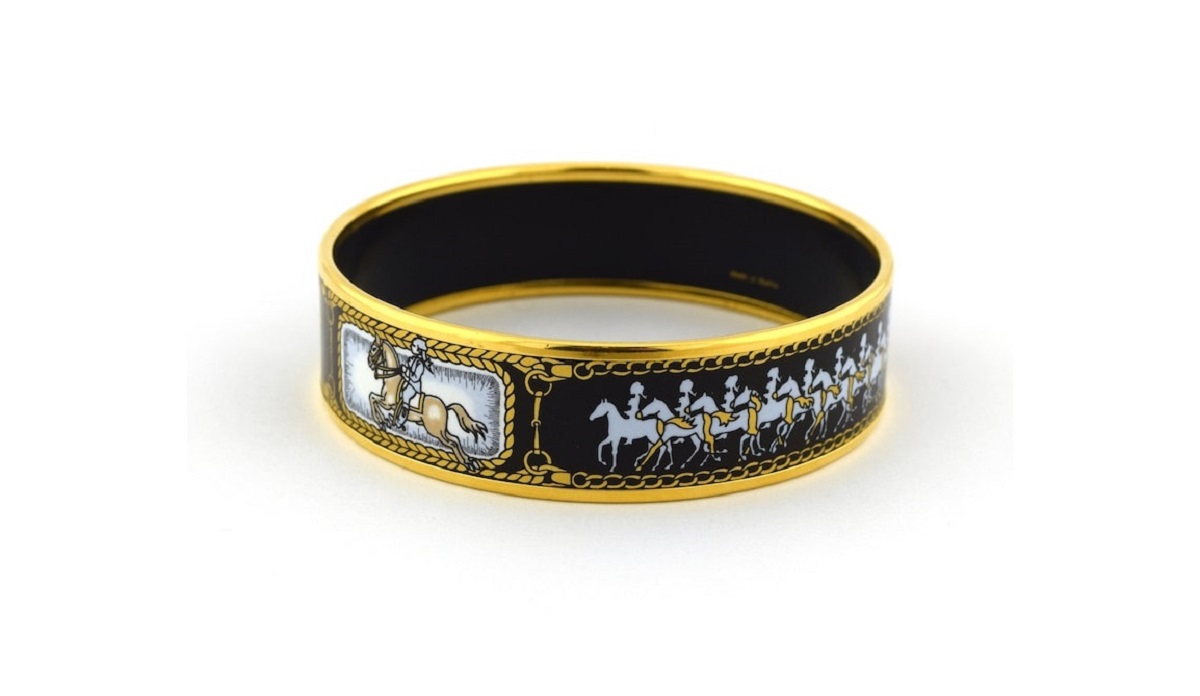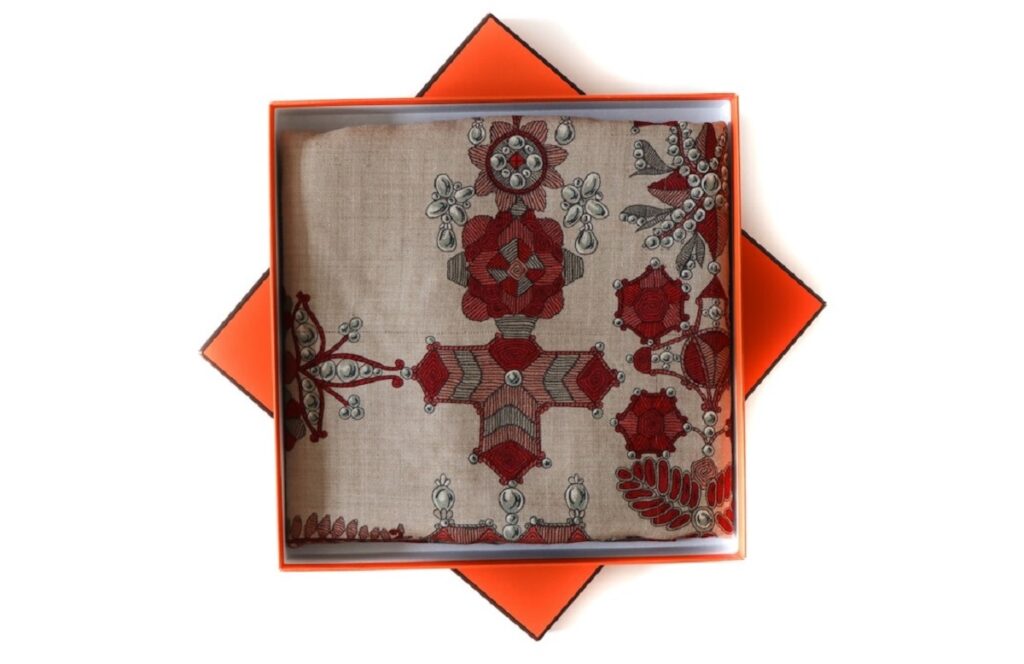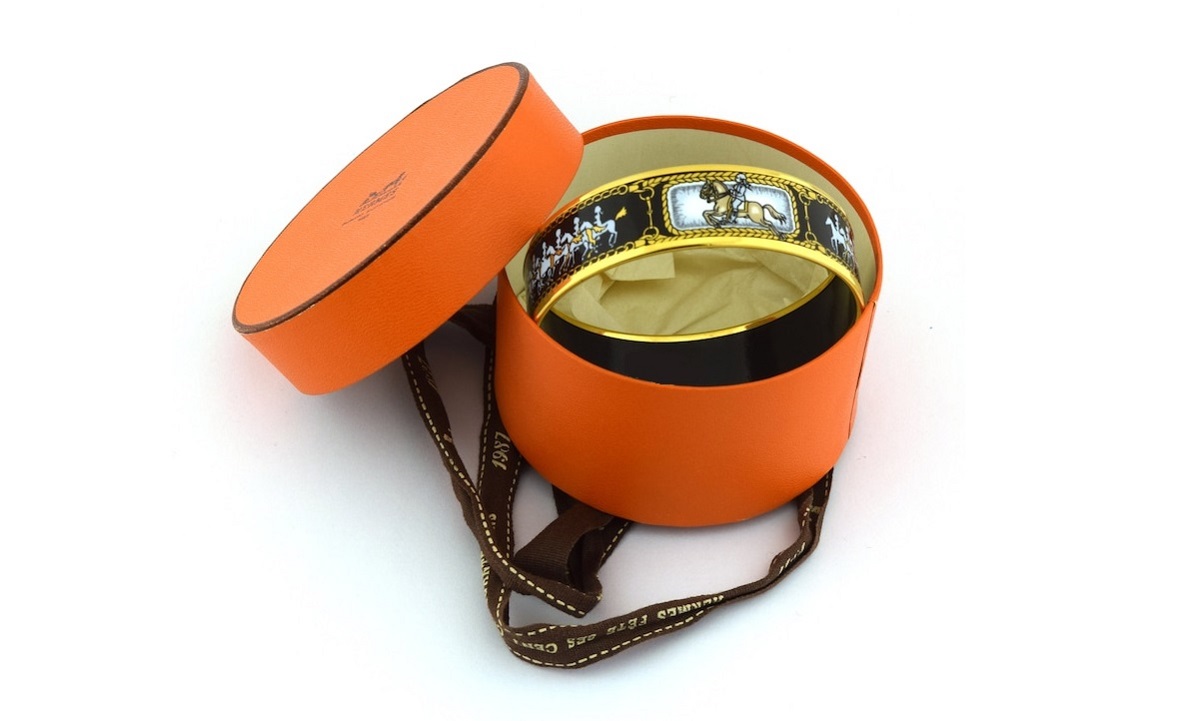In the dynamic landscape of the fashion industry, the concept of luxury transcends mere material possessions; it embodies a statement of identity, craftsmanship, and timeless elegance. At the pinnacle of this realm stands Hermès, a brand synonymous with opulence, artistry, and exclusivity. This article delves into the multifaceted journey of Hermès, tracing its evolution from a modest purveyor of equestrian goods to a global powerhouse of luxury fashion.
Defining Luxury in Fashion
To comprehend Hermès’ ascent, one must first unravel the intricate tapestry of luxury in the fashion world. Luxury extends beyond the tangible; it is an intangible experience, a reflection of heritage, and a commitment to unparalleled quality. Hermès, as a luxury brand, encapsulates these values, crafting a narrative that extends beyond mere products into a lifestyle of sophistication and refinement.
Luxury, in the context of fashion, is a blend of heritage, craftsmanship, and exclusivity. It’s an experience that goes beyond the material, a narrative that intertwines with the wearer’s identity. Hermès epitomizes this definition, creating a lifestyle that reflects sophistication and refinement. This article embarks on a journey to unravel the layers of Hermès, from its humble beginnings to its current status as a global icon of luxury.
Hermès Overview as a Luxury Brand
The genesis of Hermès dates back to the meticulous craftsmanship of Thierry Hermès, who founded the brand in 1837. Initially catering to the equestrian elite, Hermès swiftly metamorphosed into a purveyor of leather goods, marking the inception of its venture into luxury fashion. Guided by a philosophy rooted in authenticity and quality, Hermès stands as a paragon of unwavering commitment to its core values.
Hermès, founded in 1837, began as a haven for equestrian enthusiasts seeking meticulously crafted harnesses and saddles. Over the years, the brand gracefully transitioned into the realm of luxury fashion, embracing a broader market with its introduction of leather goods. This strategic pivot marked the foundation of Hermès as a brand synonymous with authenticity and quality.
Origins of Hermès
Founding and Early Years
The genesis of Hermès was marked by Thierry Hermès’ passion for crafting harnesses and saddles. The brand’s early years were defined by its dedication to the equestrian world, establishing a reputation for impeccable craftsmanship and attention to detail. As the world underwent transformations, Hermès adeptly transitioned from the equestrian realm to the burgeoning world of luxury fashion.
Hermès’ journey begins with the fervor of Thierry Hermès, crafting harnesses and saddles for the equestrian elite. These formative years laid the foundation for the brand’s commitment to meticulous craftsmanship and attention to detail, virtues that would accompany Hermès as it transitioned into the realms of luxury fashion.
Transition to Luxury Fashion
The transition from equestrian gear to luxury fashion was a pivotal moment for Hermès. The introduction of leather bags and accessories marked the brand’s foray into a broader market, captivating audiences with a blend of functionality and aesthetics. The strategic pivot laid the foundation for Hermès to emerge as a harbinger of luxury in the global fashion arena.
Hermès’ transformation from crafting equestrian gear to luxury fashion marked a strategic pivot. The introduction of leather bags and accessories was a pivotal moment, showcasing a fusion of functionality and aesthetics. This strategic move became the cornerstone of Hermès’ emergence as a global leader in the realm of luxury.

The Iconic Hermès Products
Jewelry: An Exquisite Extension of Elegance
Hermès’ foray into the world of jewelry is an exquisite extension of its commitment to elegance and craftsmanship. From intricately designed bracelets to timeless necklaces, each piece reflects the brand’s dedication to blending heritage with contemporary aesthetics. Embodying the same attention to detail found in its renowned bags and scarves, Hermès jewelry is a symbol of enduring sophistication, offering patrons an opportunity to adorn themselves with the same level of opulence that defines the brand across its diverse product lines.
Birkin and Kelly Bags
The Birkin and Kelly bags, iconic symbols of luxury, epitomize Hermès’ prowess in design and craftsmanship. Originating from chance encounters and collaborations, these bags have transcended their utilitarian origins to become cultural phenomena. The allure lies not just in the materials and craftsmanship but also in the exclusivity and stories that accompany each creation.
The Birkin and Kelly bags, born from serendipity and collaborations, have become more than just accessories; they are cultural touchstones. Beyond the opulent materials and impeccable craftsmanship, these bags carry tales of exclusivity and uniqueness that resonate with the discerning clientele.
Silk Scarves
Hermès’ silk scarves are more than mere accessories; they are canvases of art. Born from collaborations with renowned artists, these scarves infuse color, culture, and creativity into the world of fashion. Beyond their aesthetic appeal, these scarves have become timeless artifacts, embodying the convergence of art and fashion.
Hermès’ silk scarves are not just pieces of fabric; they are intricate canvases that tell stories of artistic collaborations. Infused with color, culture, and creativity, these scarves transcend their utilitarian purpose, becoming timeless artifacts that embody the fusion of art and fashion.

Other Iconic Products
Hermès’ repertoire extends beyond bags and scarves. The brand’s dedication to craftsmanship is evident in its diverse offerings, ranging from leather goods to ready-to-wear collections. Each product, meticulously crafted and imbued with a sense of exclusivity, contributes to Hermès’ narrative of luxury and refinement.
Beyond the iconic bags and scarves, Hermès’ dedication to craftsmanship extends to a diverse range of products. From exquisite leather goods to meticulously crafted ready-to-wear collections, each item is a testament to Hermès’ commitment to creating a world of luxury and refinement.
Hermès Craftsmanship and Artistry
Emphasis on Traditional Craftsmanship
Central to Hermès’ identity is its unwavering commitment to traditional craftsmanship. Handmade products, intricate detailing, and artisanal techniques are not mere features but pillars that uphold the brand’s legacy. The master artisans at Hermès undergo rigorous training, ensuring the preservation of time-honored techniques.
Hermès’ commitment to traditional craftsmanship is not a choice; it’s a legacy. The emphasis on handmade products, intricate detailing, and artisanal techniques is not just about creating luxury goods; it’s about preserving an art form. The master artisans at Hermès are not just skilled craftsmen; they are guardians of a heritage that transcends generations.
Limited Production and Exclusivity
Maintaining a delicate balance between demand and exclusivity, Hermès has mastered the art of limited production. This intentional scarcity not only heightens the desirability of its products but also fosters a sense of exclusivity among its discerning clientele. The option for customization further elevates the personal connection between the brand and its patrons.
In a world that often emphasizes mass production, Hermès stands as a beacon of intentional scarcity. The limited production not only enhances the allure of its products but also cultivates a sense of exclusivity among its discerning clientele. The option for customization adds another layer, allowing patrons to weave their personal stories into the fabric of Hermès.
Hermès and Global Expansion
International Presence
Hermès’ journey from a Parisian atelier to a global presence is a testament to its adaptability and understanding of diverse markets. The brand’s expansion strategy involves opening flagship stores worldwide, each carefully curated to resonate with local aesthetics while staying true to the essence of Hermès.
From a Parisian atelier to a global luxury icon, Hermès’ journey spans continents. The brand’s expansion strategy goes beyond establishing stores; it involves creating immersive experiences that resonate with local aesthetics. Each flagship store is a testament to Hermès’ ability to blend its Parisian roots with the diverse cultural tapestries of global markets.
Collaborations and Partnerships
Hermès’ collaborations extend beyond the confines of the fashion industry. Collaborations with artists, designers, and even other luxury brands contribute to its ever-evolving narrative. Limited-edition releases and special collections emerge as not just products but as milestones in the brand’s journey, creating ripples in the global luxury market.
Collaborations are not just a marketing strategy for Hermès; they are a form of artistic expression. Whether with renowned artists, designers, or other luxury brands, each collaboration adds a layer to the brand’s narrative. Limited-edition releases become not just products but cultural phenomena, embodying the spirit of creativity and innovation.
Challenges and Controversies
Counterfeiting and Brand Protection
As a global luxury brand, Hermès is not immune to the challenges posed by counterfeiting. The battle against counterfeit products is multifaceted, involving legal actions, technological innovations, and consumer education. Hermès’ proactive approach aims not only to protect its brand integrity but also to safeguard the trust of its clientele.
In a world where counterfeit products proliferate, Hermès stands as a guardian of authenticity. Legal battles, technological innovations, and consumer education are not just measures to combat counterfeiting; they are a commitment to upholding the brand’s integrity. Hermès’ proactive approach transcends protection; it builds a fortress of trust around the brand.
Sustainability and Ethical Considerations
In an era where sustainability is a paramount concern, Hermès takes strides to align its practices with environmental responsibility. From sourcing materials ethically to embracing sustainable technologies, the brand navigates the delicate balance between luxury and environmental consciousness, ensuring its legacy is one of responsibility and longevity.
Sustainability is not just a buzzword for Hermès; it’s a guiding principle. Ethical sourcing, sustainable technologies, and a commitment to environmental responsibility are not compromises but conscious choices. Hermès is not just embracing sustainability; it is shaping a future where luxury and responsibility coexist harmoniously.
The Future of Hermès
Innovation and Technology
The intersection of tradition and innovation defines Hermès’ approach to technology. Integrating artificial intelligence in design processes, exploring sustainable technologies, and enhancing the digital retail experience are strategic moves that position Hermès at the forefront of technological advancements within the luxury sector.
Hermès is not merely embracing technology; it is shaping its evolution. Artificial intelligence becomes a tool to enhance design processes, sustainable technologies are not just a trend but a commitment, and the digital retail experience is not just a transaction but an immersive journey. The future of Hermès is not just technologically advanced; it is a synthesis of tradition and innovation.
Maintaining Exclusivity in a Changing Market
As consumer preferences evolve, Hermès embraces the challenge of maintaining exclusivity. Strategies involve navigating e-commerce dynamics, adapting to influencer culture, and exploring niche markets. By staying attuned to market shifts while preserving its core values, Hermès is poised to sustain its allure in an ever-changing landscape.
In a market characterized by constant evolution, Hermès is not just adapting; it is thriving. Navigating e-commerce dynamics is not a challenge; it’s an opportunity to extend the brand’s reach. Adapting to influencer culture is not a compromise; it’s a strategic move to resonate with younger demographics. Exploring niche markets is not a risk; it’s a testament to Hermès’ ability to redefine exclusivity.
Emerging Trends in the Luxury Fashion Industry
Influence of Social Media on Luxury Branding
The symbiotic relationship between luxury brands and social media is reshaping the industry landscape. Influencer marketing, strategic campaigns, and a digital presence are pivotal in capturing the attention of a global audience. Hermès’ adeptness in navigating this digital realm underscores its forward-thinking approach to luxury branding.
In an era dominated by social media, Hermès is not just present; it is a storyteller. Influencer marketing is not just a strategy; it’s a way to weave the brand’s narrative into the fabric of popular culture. A digital presence is not just a formality; it’s an immersive experience. Hermès is not just navigating the digital realm; it is shaping it.
Adapting to Sustainable Practices in Luxury Fashion
Sustainability is no longer a trend but a necessity in the luxury fashion industry. Innovations in sustainable materials, circular fashion initiatives, and consumer-driven demand for ethical practices are shaping the future. Hermès’ commitment to sustainable practices not only aligns with this shift but positions the brand as a leader in responsible luxury.
Sustainability is not a checkbox for Hermès; it’s a philosophy. Innovations in sustainable materials are not just about staying eco-friendly; they are about setting new standards. Circular fashion initiatives are not a response to a trend; they are a commitment to a circular economy. Hermès’ dedication to sustainable practices is not just a part of its strategy; it’s a legacy in the making.
The Role of Artificial Intelligence in Luxury Fashion
Artificial intelligence is revolutionizing the creative and operational facets of luxury fashion. From personalized customer experiences to AI-driven design, the impact is profound. Hermès’ exploration of AI reflects its commitment to embracing innovation while upholding the essence of craftsmanship and exclusivity.
Artificial intelligence for Hermès is not a tool; it’s a creative companion. Personalized customer experiences are not just a convenience; they are an extension of the brand’s commitment to individuality. AI-driven design is not just efficient; it’s an exploration of the intersection between technology and art. Hermès’ foray into AI is not just about embracing innovation; it’s about redefining the future of craftsmanship.
Hermès: A Timeless Odyssey in Luxury
In concluding this odyssey through the evolution of Hermès, we find a brand that transcends the boundaries of time and trends. From its origins as a purveyor of equestrian goods to its current status as a global luxury powerhouse, Hermès’ journey is a testament to resilience, innovation, and an unwavering commitment to the art of living well.
As we recapitulate the milestones, reflect on the enduring appeal, and anticipate future developments, Hermès emerges not just as a brand but as a cultural phenomenon. Its legacy extends beyond products, embodying a lifestyle that celebrates craftsmanship, innovation, and a timeless commitment to excellence. In the ever-evolving tapestry of global luxury fashion, Hermès stands as a beacon, a testament to the enduring allure of a brand that has woven itself into the fabric of luxury history.

